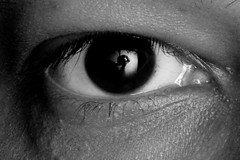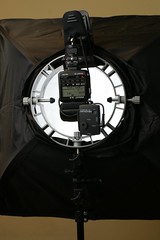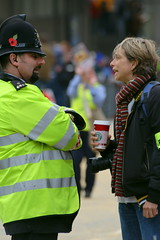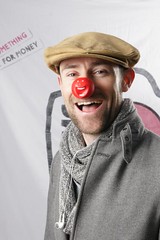 It has been said that the human eye has a maximum aperture of f3.5, a shutter speed of about 1/30s and a maximum sensitivity equivalent to ISO800. It got me thinking that if I wanted a photograph to look like my unadjusted night vision I could use these settings and get an appropriate exposure for a night scene. I tried this out and ISO800 was a little on the dark side I found that ISO1600 was much closer to the scene I observed with my naked eye. Not that I'm bragging about my night vision or anything.
It has been said that the human eye has a maximum aperture of f3.5, a shutter speed of about 1/30s and a maximum sensitivity equivalent to ISO800. It got me thinking that if I wanted a photograph to look like my unadjusted night vision I could use these settings and get an appropriate exposure for a night scene. I tried this out and ISO800 was a little on the dark side I found that ISO1600 was much closer to the scene I observed with my naked eye. Not that I'm bragging about my night vision or anything.
It seems to me that this could be a useful rule of thumb for manually setting an exposure where the camera's light meter would be fooled by the darkness into overexposing everything. Get in that ballpark and then dial up or down to suit your taste. More easy to remember than f3.5 1/30s ISO1600 would be f8 2s at ISO100.
Of course the thing that would mess things up is the eye's enormous dynamic range, because when you look at the street lights your eye will change its aperture and sensitivity to suit. The camera's sensor may struggle to capture everything, so you may well need to expose for the highlights, but the rule of thumb may be good for getting close.
Here is an exercise for you, calibrate your night vision starting at our rule of thumb exposure f3.5 1/30s ISO800 take a shot, then adjust the ISO, aperture or shutter and chimp until you see in the viewfinder what you see with your own eyes. What is your baseline for night vision? Are your eyes more or less sensitive? Drop me a comment and let me know what you get









